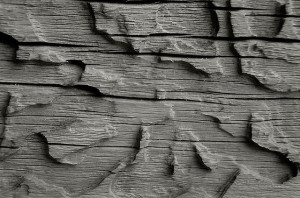Why Are Carpenter Ants a Concern?
By Chris Williams on July 22, 2014.
If carpenter ants don’t eat wood, why should I be concerned if I have a few in my house? I’ve had ants before and they eventually go away.–B.E., Holden, MA
Are The Ants Just Foraging or Are They Nesting?
 You shouldn’t necessarily be concerned if you have just a few carpenter ants in your house. They could just be wandering in from outside, looking for food, or they might have been accidentally carried in on firewood. There are two situations, though, where even just a few ants can mean trouble: if you are seeing these few carpenter ants in the winter, or if you are seeing winged swarmer ants. Since carpenter ants are inactive and deep in their ground nests in the winter, carpenter ants seen in your home then must be nesting in your home. If you see multiple winged carpenter ants in your home, they are almost certainly nesting inside. A colony doesn’t release swarmers until it has been growing for at least 3 to 6 years.
You shouldn’t necessarily be concerned if you have just a few carpenter ants in your house. They could just be wandering in from outside, looking for food, or they might have been accidentally carried in on firewood. There are two situations, though, where even just a few ants can mean trouble: if you are seeing these few carpenter ants in the winter, or if you are seeing winged swarmer ants. Since carpenter ants are inactive and deep in their ground nests in the winter, carpenter ants seen in your home then must be nesting in your home. If you see multiple winged carpenter ants in your home, they are almost certainly nesting inside. A colony doesn’t release swarmers until it has been growing for at least 3 to 6 years.
They Don’t Eat Wood, But They Still Destroy It
It’s true that carpenter ants don’t actually eat wood like termites. But they can still do a considerable amount of damage as they hollow out wood to make nest galleries inside. If you broke open a piece of wood that carpenter ants have been working, you would see wide, curved, smooth-sided galleries, maybe with eggs or larvae inside. As the ants excavate wood with their mandibles, they dump the sawdust, bits of insulation, and dead insects to the outside of the nest through slits in the wood. As the excavating continues, infested wood can be completely hollowed out, yet you can’t see the damage on the surface.
Carpenter ants don’t always nest in wood, either. They will also establish nests in small void spaces like inside hollow doors, or in insulation.
How Serious is Carpenter Ant Damage to Wood?
Carpenter ants often start their nests in wood that is damp or softened from water leaks and subsequent rot. This wood is already damaged so having to replace it because ants have hollowed it out may not be a big deal. However, carpenter ants can move into sound wood as their colony progresses; they also break away into secondary satellite nests.
Carpenter ant damage to wood is generally not as serious as termite damage but a carpenter ant infestation that is not discovered or is ignored can result in significant damage. The size of the colony makes a difference, too. A colony that has been working the wood in your home for some time can damage structural timbers (see “Carpenter Ant Damage to Wood – How Bad Can it Be?”).
Seeing a few carpenter ants in your home does not mean that they are nesting there and damaging wood. I would want to know though, as a homeowner, if that could be the case. An exterminator can often track the ants back to a nest site, either indoors or out. Most people would want the ants gone from their house, period.